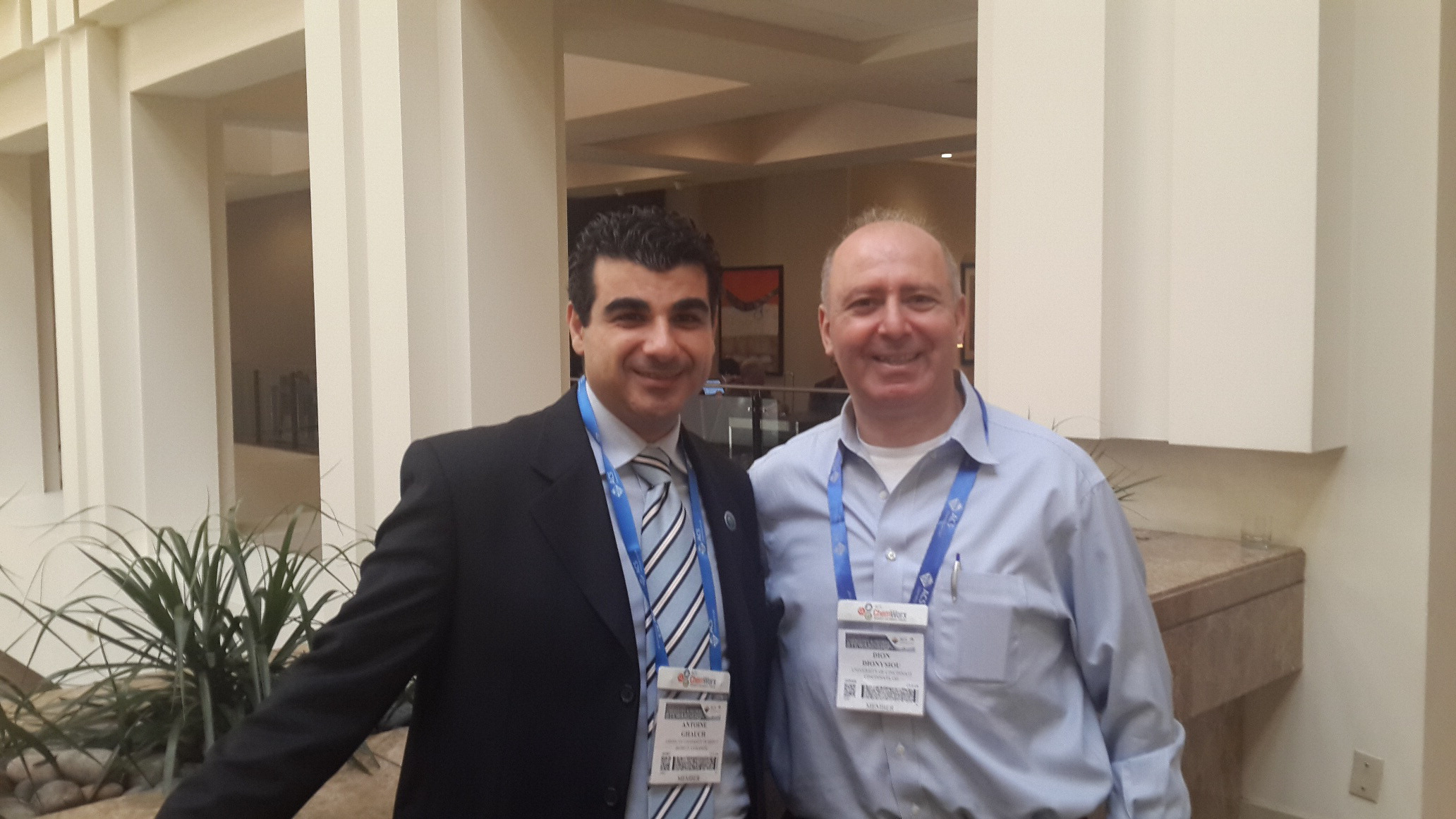Dr. Ghauch and his colleagues tested advanced oxidation processes (AOPs) across several pharmaceutical contaminants, including bisoprolol, ibuprofen, methylene blue, sulfamethoxazole, naproxen, and ketoprofen. In the thermal application, results showed complete degradation. In testing various chemical activations, results showed plated iron particles were most efficient and sustainable toward degradation. The researchers undertook co-activation tests using heat and iron particles in order to study synergistic effects. Researchers also applied these processes to leachates of solid waste samples from a composting pilot. Preliminary data showed excellent results for potential application of such decontamination technique on leachates effluents before their discharge into waterways. Overall results showed persulfate-based AOPs can be implemented to improve water quality in Lebanon and can be scaled up for the treatment of hospital effluents, as well as leachates in the absence of any wastewater treatment plant operational in coastal cities like Beirut, Tripoli, and Jounieh.
The PI and research team shared results of their PEER work at a variety of conferences, including the American Chemical Society annual meeting, IWA Specialist Conference on Assessment and Control of Micropollutants/Hazardous Substances in Water, and the Arab American Frontiers of Sciences meeting.
In addition to his research efforts, Dr. Ghauch also reinstated a graduate-level chemistry course at his university and introduced elements of the ongoing PEER work into two courses in the Chemistry Department. By the time the project ended, he had secured $54,000 in additional grants, including from USAID’s American Schools and Hospitals Abroad program. As an unexpected side benefit from his PEER-supported research, while trying to track contaminants in water and improve water quality, the PI developed a new instrument that can also detect special dyes and pigments used in valuable documents, for example, banknotes, passports, visas, etc., thus improving security features and limiting fraud and counterfeiting activities. This instrument received a provisional patent from the U.S. Patent and Trademark Office in January 2015.
Publications
S. Naim and A. Ghauch. 2015. Ranitidine abatement in chemically activated persulfate systems: assessment of industrial iron waste for sustainable applications.
Chemical Engineering Journal 288: 276-288.
https://doi.org/10.1016/j.cej.2015.11.101 A. Ghauch, A.M. Tuqan, and N. Kibbi. 2015. Naproxen abatement by thermally activated persulfate in aqueous systems.
Chemical Engineering Journal 279: 861-873.
https://doi.org/10.1016/j.cej.2015.05.067 A. Ghauch. 2015. Iron-based metallic systems: an excellent choice for sustainable water treatment.
FOG Freiberg Online Geology 38.
https://tu-freiberg.de/sites/default/files/2023-08/fog_volume_38.pdf
G. Ayoub and A. Ghauch. 2014. Assessment of bimetallic and trimetallic iron-based systems for persulfate activation: application to sulfamethoxazole degradation.
Chemical Engineering Journal 256: 280-292.
http://dx.doi.org/10.1016/j.cej.2014.07.002 A. Ghauch and S. Naim. 2013. Rapid elimination of Ranitidine in water by Fe0 Activated persulfate systems.
Proceedings of the 8th Micropol and Ecohazard Conferece, IWA-11779R,208-209.
A. Ghauch, G. Ayoub, and S. Naim. 2013. Degradation of sulfamethoxazole by persulfate assisted micrometric Fe0 in aqueous solution.
Chemical Engineering Journal 228: 1168-1181.
https://doi.org/10.1016/j.cej.2013.05.045 A. Ghauch, A.M. Tuqan, N. Kibbi, and S. Geryes. 2012. Methylene Blue discoloration by heated persulfate in aqueous solution.
Chemical Engineering Journal 213: 259-271.
https://doi.org/10.1016/j.cej.2012.09.122
A. Ghauch, A.M. Tuqan, and N. Kibbi. 2012. Ibuprofen removal by heated persulfate in aqueous solution: a kinetics study.
Chemical Engineering Journal 197: 483-492.
https://doi.org/10.1016/j.cej.2012.05.051 A. Ghauch and A.M. Tuqan. 2012. Oxidation of bisoprolol in heated persulfate/H
2O systems: kinetics and products.
Chemical Engineering Journal 183: 162-171.
https://doi.org/10.1016/j.cej.2011.12.048 



